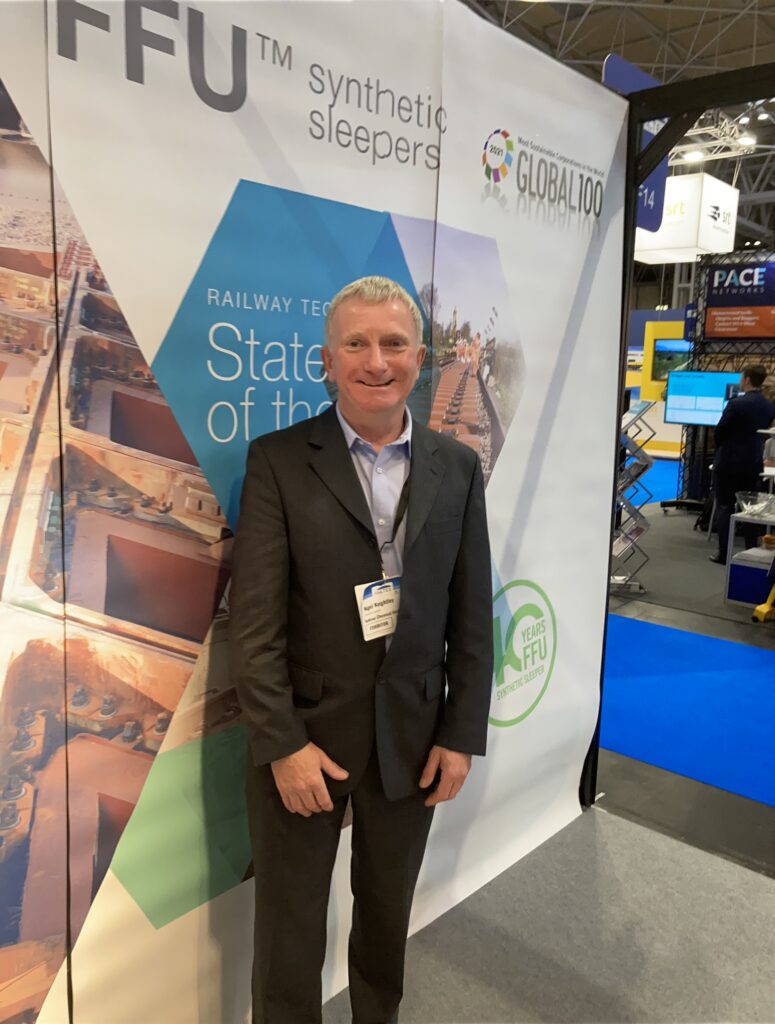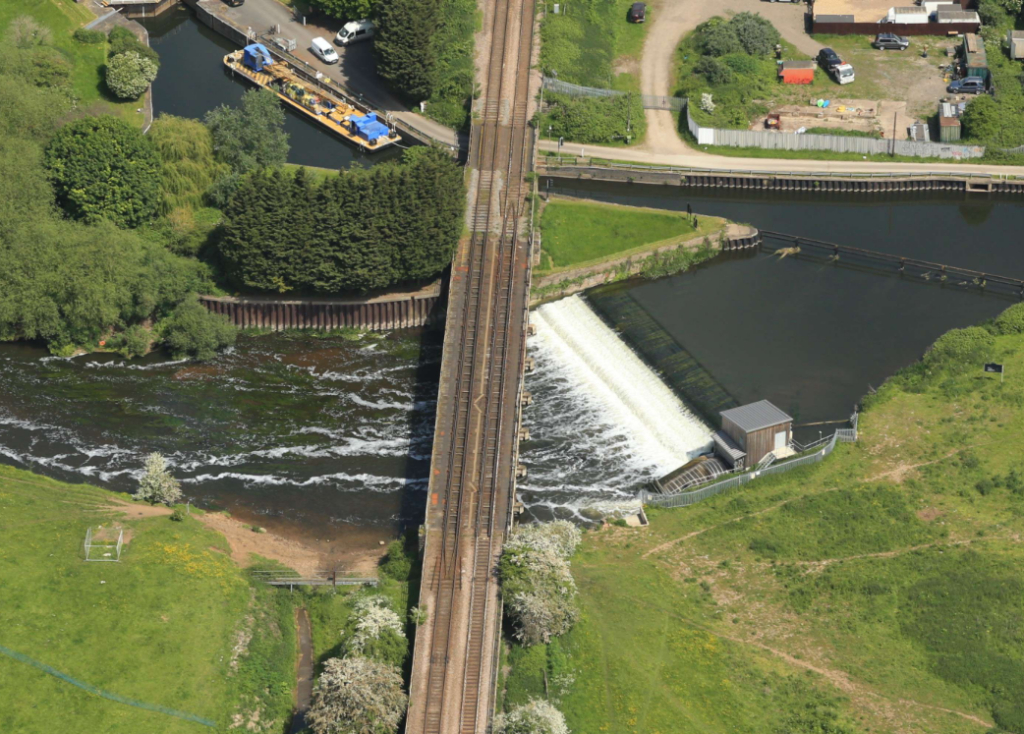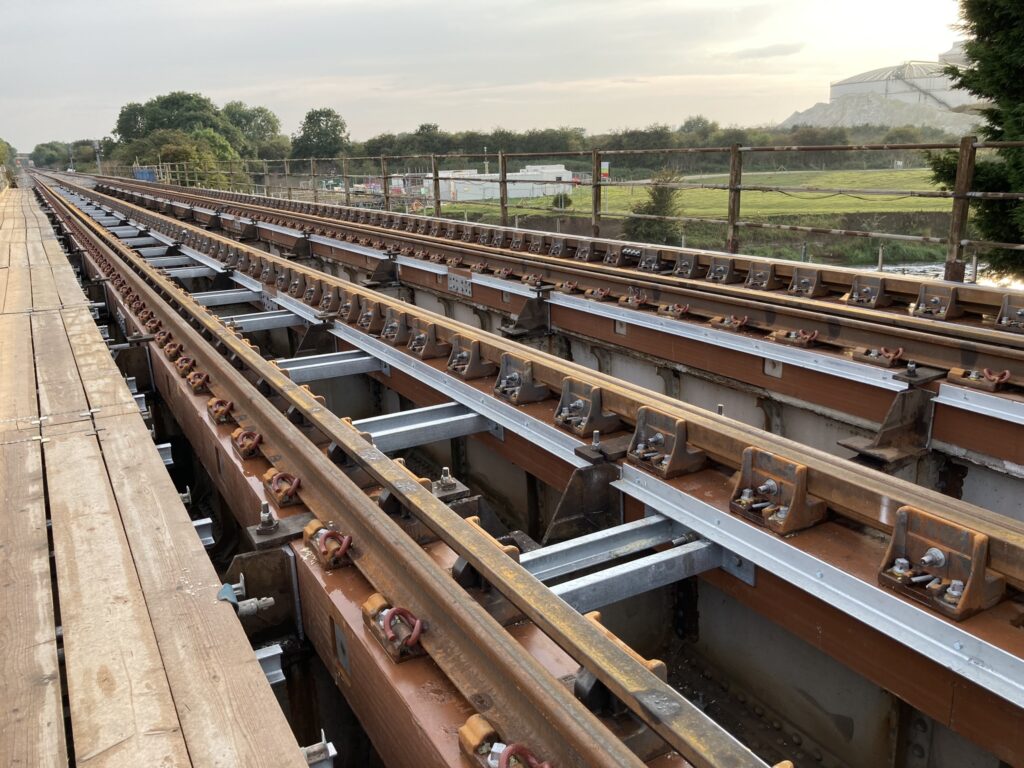Nigel Keightley, consulting track engineer at Sekisui, talks us through the state of the art upgrade of a Nottinghamshire Network Rail bridge.
Sekisui manufactures synthetic wood baulks made from Fibre-reinforced Foamed Urethane (FFU). Network Rail engineers installed the first FFU baulks as replacements for traditional hardwood waybeam timbers in Kent during 2014. Since then, FFU has been used to provide track support on more than 65 railway bridges in the UK and Ireland.

The FFU product was first introduced on Japanese Railways in 1980 and early installations are still performing to specification. The most recent installation was completed by Network Rail Works Delivery Eastern Team and its industry partners during a blockade at the impressive River Devon Viaduct at Newark, Nottinghamshire, between 2-11 September 2023. This formed part of a wider £2 million project to improve the bridge structure and track assets.
Sekisui holds full Network Rail Product Acceptance Certification PA05/06576 for the installation of FFU to support track systems over bridges, this includes run on and run off sleepers, bearers for guard rails, and gathering rail panels. Sekisui welcomes the opportunity to work with designers to provide solutions for each individual bridge asset. The FFU baulks can be fabricated and milled to meet structure specific geometry requirements, including providing holes, notches, pockets, and variable cross level to individual baulks.
Key benefits over hardwood include longevity with over 50 years’ service life. FFU is also form retentive, not prone to splitting or absorption of water, and does not rot or deteriorate in sunlight. It therefore contributes significantly to asset ‘whole life cycle cost reduction’ by reducing maintenance and renewal interventions.The product does not require maintenance inspectors to complete micro-drilling during service life and is fully recyclable.
NOB1 Bridge 63 River Devon, Newark
Underbridge 63 River Devon Viaduct (NOB1) is located 150 metres southwest of the East Coast Main Line and the Newark Flat Crossing which was successfully installed on an FFU lattice bearer system in 2019. The viaduct supports a 50mph two-track mixed traffic railway on the Nottingham East-Barnetby line. It comprises a total of 26 spans and crosses the southern branch of the River Trent, known locally as the River Devon.
The bridge is in the vicinity of light industrial works and the British Sugar processing plant to the west. A weir is present on the river immediately to the east of the bridge where an Archimedes screw powerplant and fish pass has recently been constructed. The Nether Lock gate is located beneath the structure and the A46 elevated road runs parallel to the railway. Restrictive site access gave the construction teams quite a logistical challenge.
The plan below shows the main river spans and canal span where the existing track was supported by timber waybeams. Additional spans located to the northwest, southeast, and centre cross the land which serves as a flood plain. The track construction was on hardwood timber sleepers on ballast.
Options
Network Rail first held initial discussions with Sekisui regarding this project in 2018 during the design phase for the Newark Flat Crossing. The River Devon project began to take shape in 2022 when designers HBPW produced options for the refurbishment of the structure and track system.
The options for the track were:
- Replace with FFU longitudinal baulk & conventional baseplates, retaining existing concrete fill.
- Replace with FFU longitudinal baulk & conventional baseplates, removing existing concrete fill.
- Replace with steel waybeam with VIPA/VANGUARD baseplates, removing existing concrete fill.
The client, East Coast Route Engineer (Track) selected Option 1 as preferred. While Options 2 and 3 offered some benefits in terms of allowing repairs and repainting to the rail bearer, these are slight, and the removal of the concrete fill and installing steel waybeam would be significantly more complex and costly.

The existing longitudinal timbers had comprised a pair of 200mm x 283mm timbers fixed together to form a 200mm x 566mm timber seated on top of the 98mm deep transverse walkway timbers. During previous annual bridge inspections, the local track maintenance engineer had reported that the existing timbers were moving, believed to be due to deterioration to the transverse decking timbers over time. Therefore, these decking timbers were to be designed out in favour of replacement with an open mesh GRP grating walkway system, supported on a new independent steel frame panel.
FFU baulks are available in sections up to 600mm x 600mm. To allow the existing holding down/lateral support brackets to be re-used, it was specified that 300mm x 560mm FFU baulks be utilised. The existing track has the waybeams seated on a concrete bed. These were installed when the original timber trestles were replaced with the current steel trestles in 1961. It is understood that the concrete was installed to provide a constant level surface over the river spans to improve the ride vertical profile following settlement of the timber trestles.
While there were a few localised areas of spalling, it generally appeared to be in good condition, and it was deemed suitable for continued use. The concrete showed some steel bars visible, therefore it was assumed the pad was reinforced with what appears to be mesh reinforcement. The site construction team ensured mortar was available during the construction works so that localised repairs could be carried out as required.
Option 1 provided the most straightforward and cost-effective solution. Initially proposing the replacement of longitudinal timbers with a ‘like-for-like’, early involvement with the project enabled Sekisui to recommend a bespoke FFU baulks system which would reduce production costs utilising by 8-metre-long baulks that would provide an extremely effective replacement for timber waybeams, with a minimum design life of 50 years. The collaboration with the designers ensured track geometry, transom detail, and holding down arrangement could all be incorporated into the pre-site FFU fabrication requirements. The River Span is some 70 metres long and required 44 FFU baulks. The Canal Span was much shorter at around 12 metres and required eight baulks to be fabricated.

Final design
By February 2023, the final design was ‘approved for construction’ and a schedule of baulks was sent to Sekisui for production. Fabrication drawings for each component were provided and approved by the client before the baulks were manufactured and shipped to the UK. Final fabrication and pre-site build up was completed by BSSL in Middlesbrough to ensure exact fit before the FFU was shipped to site for installation.
In addition to the baulks, Sekisui supplied a total of 480 FFU sleepers and bearers to provide track support over the land spans for the run-on and run-offs from the structures. These also supported the Schwihag BCR7 baseplates with UIC33 guard rails and gathering panels. The benefit was provision of continuity of track stiffness.
The Network Rail Works Delivery executed the track programme successfully between 2-11 September 2023 and the line was safely handed back to traffic in the early hours of 11 September.
With thanks to Works Delivery Eastern, Capital Delivery Eastern, AmcoGiffen, PBH Rail, and HBPW Consulting Engineers.
Thanks also to Glenn Wilson (SPE Track NR), Rachel Braid (PM Track NR), Lee Stevens (WDM Track NR), Jon Livesey (HBPW), Mike Dawson (PBH Track Designer).
Sekisui is proud to have been a supplier to this prestigious project.
Image credit: Sekisui

